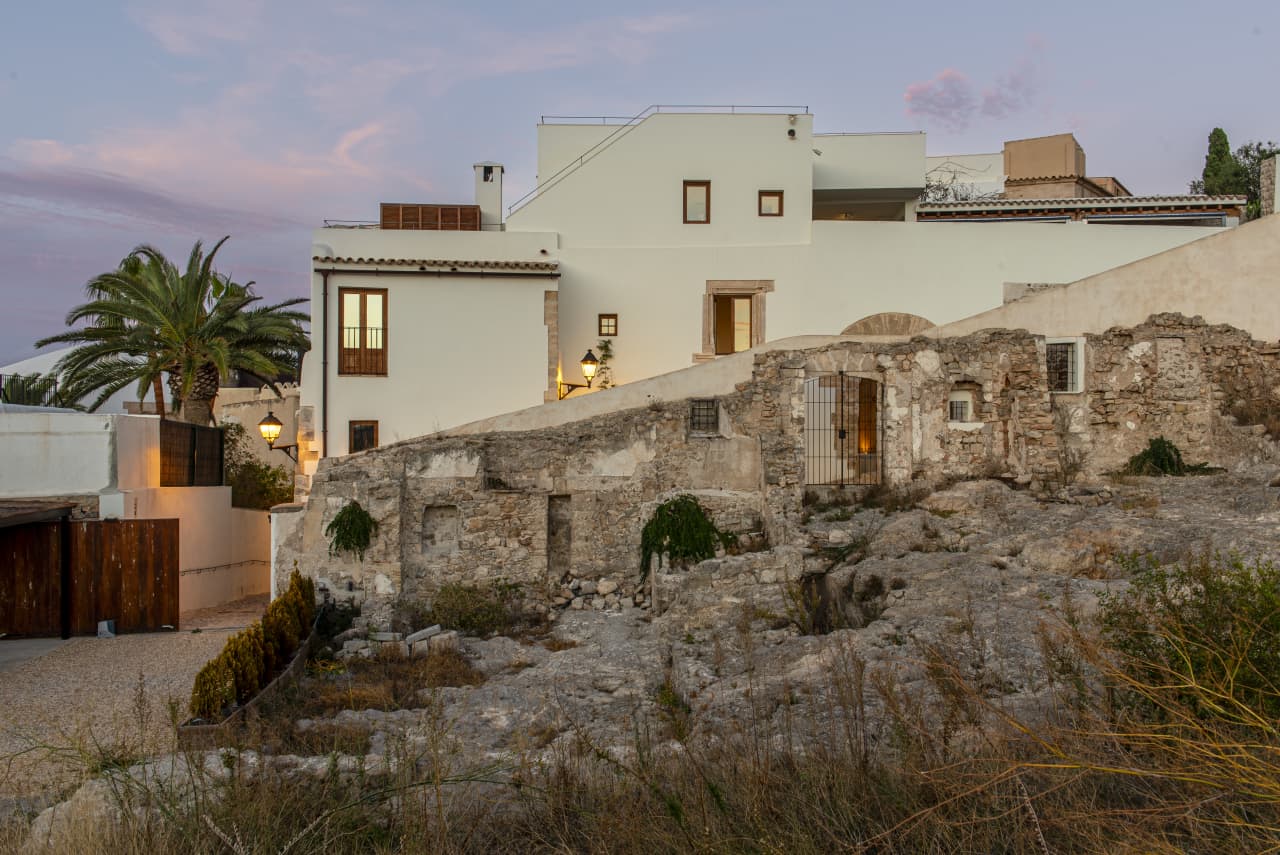Christie’s Turns Venture Investor With A New Tech-Focused Fund
Christie’s Venture will focus on early-stage financing for companies developing Web 3.0 and related technologies, innovations that make it easier to consume art.
Christie’s announced on Monday that it’s now investing in leading-edge technology related to the future of the art market through an internal strategic venture fund.
Christie’s Venture will focus on early-stage financing for companies developing Web 3.0 and related technologies, innovations that make it easier to consume art—including digital art, and on financial technologies that make it easier to buy and sell art.
“We’re particularly interested in founders who are doing things that reduce friction in our space—whether it be buying and selling, provenance, security, or technologies that help people consume art better,” says Devang Thakkar, global head of Christie’s Ventures. “Those are the kinds of areas that we’ve identified where we can help move the needle.”
Thakkar began advising Christie’s CEO Guillame Cerutti and the executive team during the pandemic on a range of digital considerations, including web and mobile applications, trends in nonfungible tokens, or NFTs, and digital ownership.
“With the growth of that area last year, we had a front-row seat to the development and innovation that founders were bringing to us,” he says. At the time, Christie’s didn’t have a way to participate in these fledgling businesses, so Thakkar pitched the idea of a venture fund.
The vehicle’s first investment is in LayerZero Labs, which Christie’s describes as a “cross-chain interoperability company.” In other words, LayerZero is developing technology that will allow people to move assets between blockchains such as Ethereum, Solana, and Algorand.
There are more than 1,000 blockchains currently in existence and Christie’s expects consolidation in the sector will reduce the number to 20 to 30 within the next year-and-a-half. LayerZero should make it easier for individuals to move their holdings without going through several steps and paying lots of fees. It’s technology that should benefit any crypto holder, not just those who own NFT-based art, Thakkar says.
Aside from such Web 3.0 technologies, Christie’s will also invest in technology that makes it easy to consume art, whether it’s through today’s computer systems, advanced screens, or something else, he says, adding, “It’s an area of investigation for us.”
Concerning financial innovation, Christie’s, which has its own art financing division, is looking outside of traditional art lending to the selling of fractionalized shares in fine art and other innovations that make it easier to sell art.
The fund is launching at a time when cryptocurrencies have fallen sharply, taking the value of many NFTs down too. Ethereum, which is the basis for many NFTs, was down nearly 66% through Friday.
But Thakkar says this “crypto winter” actually makes it “a little more realistic to invest in this space—the fog of speculation and high-price points have tapered down a bit.” He points to Andreessen Horowitz, a US$33 billion California-based venture firm that began investing in leading-edge tech in 2009, in the midst of the financial crisis.
Christie’s Ventures is seeded from the auction house’s balance sheet and will not include other investors. Legal and financial due diligence will all be handled in house, too.
Thakkar, who has been investing in companies on his own for 10 years, worked at Microsoft for a decade and was a former executive at Artsy, and he says, he also grew up around art. This new role at Christie’s is “a perfect blend of every fabric of my being,” he says.
Reprinted by permission of Penta. Copyright 2021 Dow Jones & Company. Inc. All Rights Reserved Worldwide. Original date of publication: July 18, 2022
 Copyright 2020, Dow Jones & Company, Inc. All Rights Reserved Worldwide. LEARN MORE
Copyright 2020, Dow Jones & Company, Inc. All Rights Reserved Worldwide. LEARN MORE
This stylish family home combines a classic palette and finishes with a flexible floorplan
Just 55 minutes from Sydney, make this your creative getaway located in the majestic Hawkesbury region.
As Paris makes its final preparations for the Olympic games, its residents are busy with their own—packing their suitcases, confirming their reservations, and getting out of town.
Worried about the hordes of crowds and overall chaos the Olympics could bring, Parisians are fleeing the city in droves and inundating resort cities around the country. Hotels and holiday rentals in some of France’s most popular vacation destinations—from the French Riviera in the south to the beaches of Normandy in the north—say they are expecting massive crowds this year in advance of the Olympics. The games will run from July 26-Aug. 1.
“It’s already a major holiday season for us, and beyond that, we have the Olympics,” says Stéphane Personeni, general manager of the Lily of the Valley hotel in Saint Tropez. “People began booking early this year.”
Personeni’s hotel typically has no issues filling its rooms each summer—by May of each year, the luxury hotel typically finds itself completely booked out for the months of July and August. But this year, the 53-room hotel began filling up for summer reservations in February.
“We told our regular guests that everything—hotels, apartments, villas—are going to be hard to find this summer,” Personeni says. His neighbours around Saint Tropez say they’re similarly booked up.
As of March, the online marketplace Gens de Confiance (“Trusted People”), saw a 50% increase in reservations from Parisians seeking vacation rentals outside the capital during the Olympics.
Already, August is a popular vacation time for the French. With a minimum of five weeks of vacation mandated by law, many decide to take the entire month off, renting out villas in beachside destinations for longer periods.
But beyond the typical August travel, the Olympics are having a real impact, says Bertille Marchal, a spokesperson for Gens de Confiance.
“We’ve seen nearly three times more reservations for the dates of the Olympics than the following two weeks,” Marchal says. “The increase is definitely linked to the Olympic Games.”

Getty Images
According to the site, the most sought-out vacation destinations are Morbihan and Loire-Atlantique, a seaside region in the northwest; le Var, a coastal area within the southeast of France along the Côte d’Azur; and the island of Corsica in the Mediterranean.
Meanwhile, the Olympics haven’t necessarily been a boon to foreign tourism in the country. Many tourists who might have otherwise come to France are avoiding it this year in favour of other European capitals. In Paris, demand for stays at high-end hotels has collapsed, with bookings down 50% in July compared to last year, according to UMIH Prestige, which represents hotels charging at least €800 ($865) a night for rooms.
Earlier this year, high-end restaurants and concierges said the Olympics might even be an opportunity to score a hard-get-seat at the city’s fine dining.
In the Occitanie region in southwest France, the overall number of reservations this summer hasn’t changed much from last year, says Vincent Gare, president of the regional tourism committee there.
“But looking further at the numbers, we do see an increase in the clientele coming from the Paris region,” Gare told Le Figaro, noting that the increase in reservations has fallen directly on the dates of the Olympic games.
Michel Barré, a retiree living in Paris’s Le Marais neighbourhood, is one of those opting for the beach rather than the opening ceremony. In January, he booked a stay in Normandy for two weeks.
“Even though it’s a major European capital, Paris is still a small city—it’s a massive effort to host all of these events,” Barré says. “The Olympics are going to be a mess.”
More than anything, he just wants some calm after an event-filled summer in Paris, which just before the Olympics experienced the drama of a snap election called by Macron.
“It’s been a hectic summer here,” he says.

AFP via Getty Images
Parisians—Barré included—feel that the city, by over-catering to its tourists, is driving out many residents.
Parts of the Seine—usually one of the most popular summertime hangout spots —have been closed off for weeks as the city installs bleachers and Olympics signage. In certain neighbourhoods, residents will need to scan a QR code with police to access their own apartments. And from the Olympics to Sept. 8, Paris is nearly doubling the price of transit tickets from €2.15 to €4 per ride.
The city’s clear willingness to capitalise on its tourists has motivated some residents to do the same. In March, the number of active Airbnb listings in Paris reached an all-time high as hosts rushed to list their apartments. Listings grew 40% from the same time last year, according to the company.
With their regular clients taking off, Parisian restaurants and merchants are complaining that business is down.
“Are there any Parisians left in Paris?” Alaine Fontaine, president of the restaurant industry association, told the radio station Franceinfo on Sunday. “For the last three weeks, there haven’t been any here.”
Still, for all the talk of those leaving, there are plenty who have decided to stick around.
Jay Swanson, an American expat and YouTuber, can’t imagine leaving during the Olympics—he secured his tickets to see ping pong and volleyball last year. He’s also less concerned about the crowds and road closures than others, having just put together a series of videos explaining how to navigate Paris during the games.
“It’s been 100 years since the Games came to Paris; when else will we get a chance to host the world like this?” Swanson says. “So many Parisians are leaving and tourism is down, so not only will it be quiet but the only people left will be here for a party.”
This stylish family home combines a classic palette and finishes with a flexible floorplan
Just 55 minutes from Sydney, make this your creative getaway located in the majestic Hawkesbury region.






















